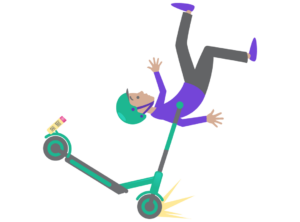Electric scooters, or e-scooters, have become increasingly popular as a convenient and sustainable mode of transportation. However, concerns have been raised about the safety and performance of these vehicles. In this blog, we’ll explore the findings of an in-depth investigation of e-scooter performance conducted by the Transport Research Laboratory (TRL) and the implications for the future of e-scooter use.
The investigation
The investigation conducted by TRL involved a series of tests on various e-scooter models, including acceleration, braking, and handling tests. The tests were designed to evaluate the performance and safety of the e-scooters under multiple conditions, including different rider weights, road surfaces, and weather conditions.
The findings of the investigation were mixed. While some e-scooters performed well in the tests, others were found to have significant performance issues. One of the main concerns was the braking distance of some e-scooters, which was found to be longer than the recommended stopping distance for vehicles travelling at similar speeds.
The investigation also found that e-scooters performed differently under different weather conditions. For example, some e-scooters had difficulty navigating wet or slippery surfaces, which could pose a safety risk for riders.
Implications for the future of e-scooter use
The findings of the investigation conducted by TRL highlight the need for better regulation and safety standards for e-scooters. While e-scooters have the potential to be a convenient and sustainable mode of transportation, it is essential to ensure that they are safe and reliable for riders.
In response to these concerns, some cities have implemented stricter regulations around e-scooter use. For example, some towns require e-scooter companies to provide helmets and safety training to riders, while others have implemented speed limits and restricted e-scooter use in certain areas.
It is also crucial for e-scooter companies to improve the design and performance of their vehicles. This includes improving braking distance and handling under different weather conditions. By improving the safety and reliability of e-scooters, companies can help ensure the long-term viability of this mode of transportation.
The conclusion on e-scooter performance
The investigation conducted by TRL sheds light on the performance and safety concerns surrounding e-scooters. While some e-scooters perform well under various conditions, others have significant performance issues that pose safety risks for riders. To ensure the long-term viability of e-scooters as a sustainable mode of transportation, cities, governments, and e-scooter companies need to work together to improve safety standards and regulations. By doing so, we can create a future where e-scooters are a safe and reliable mode of transportation for all.

